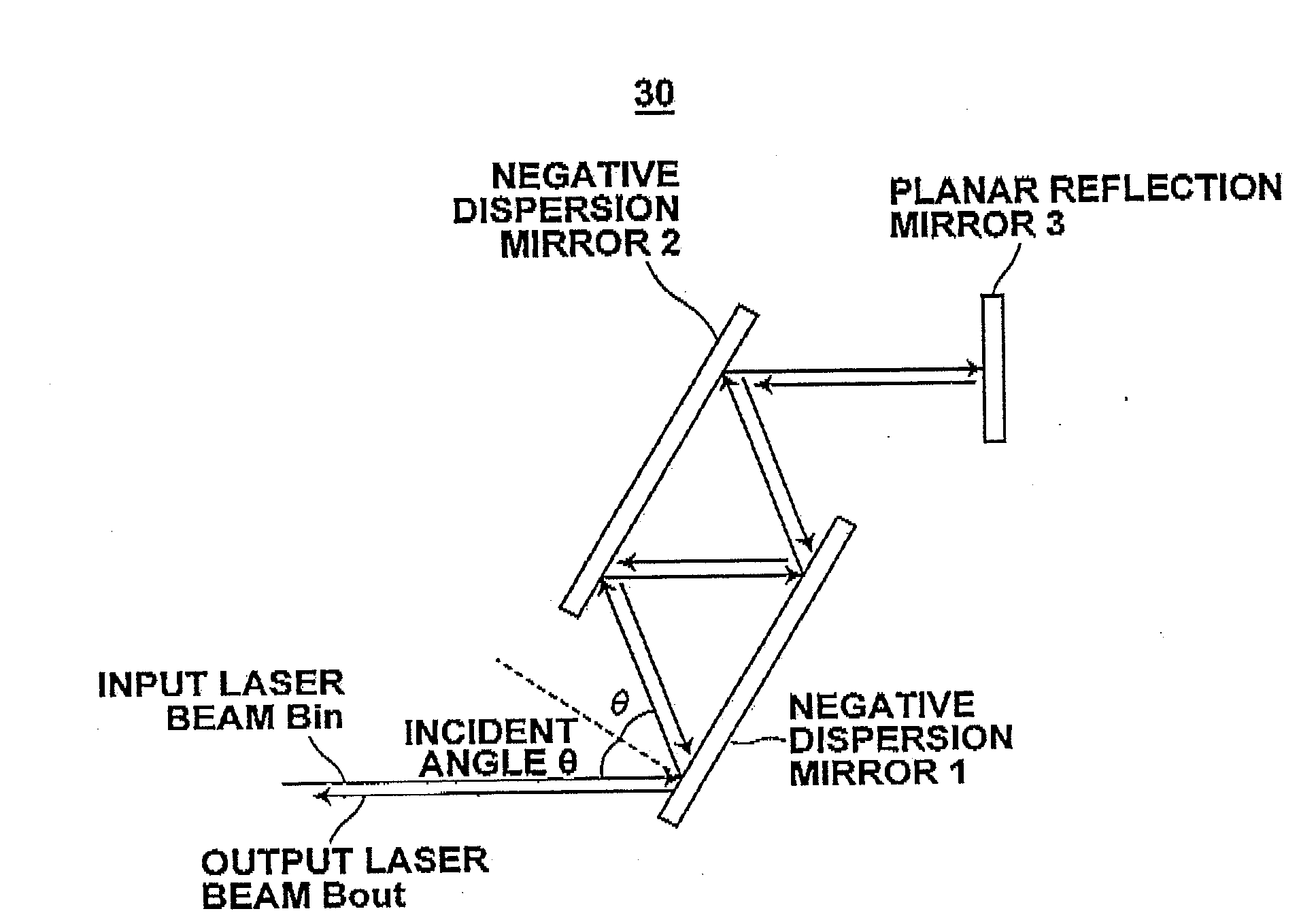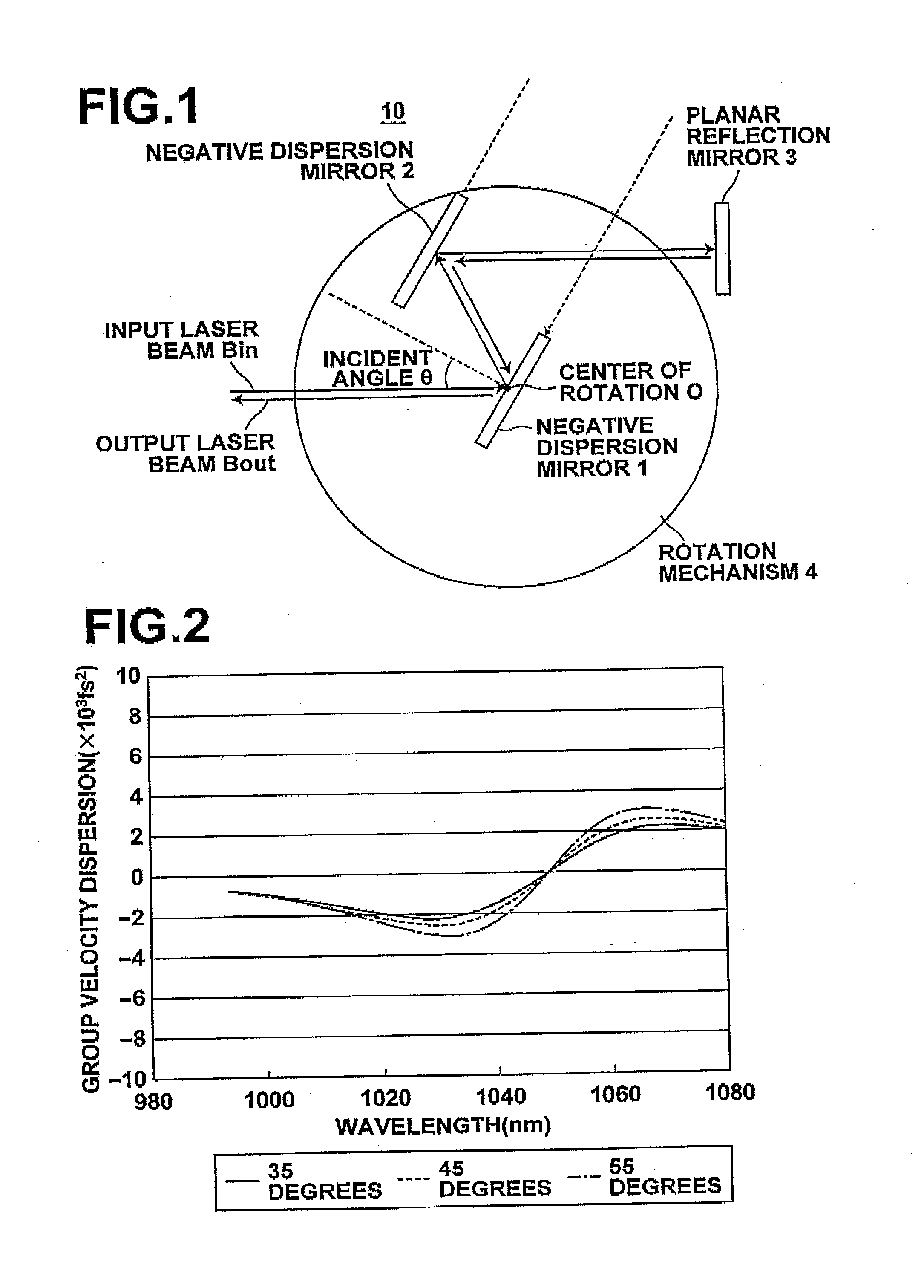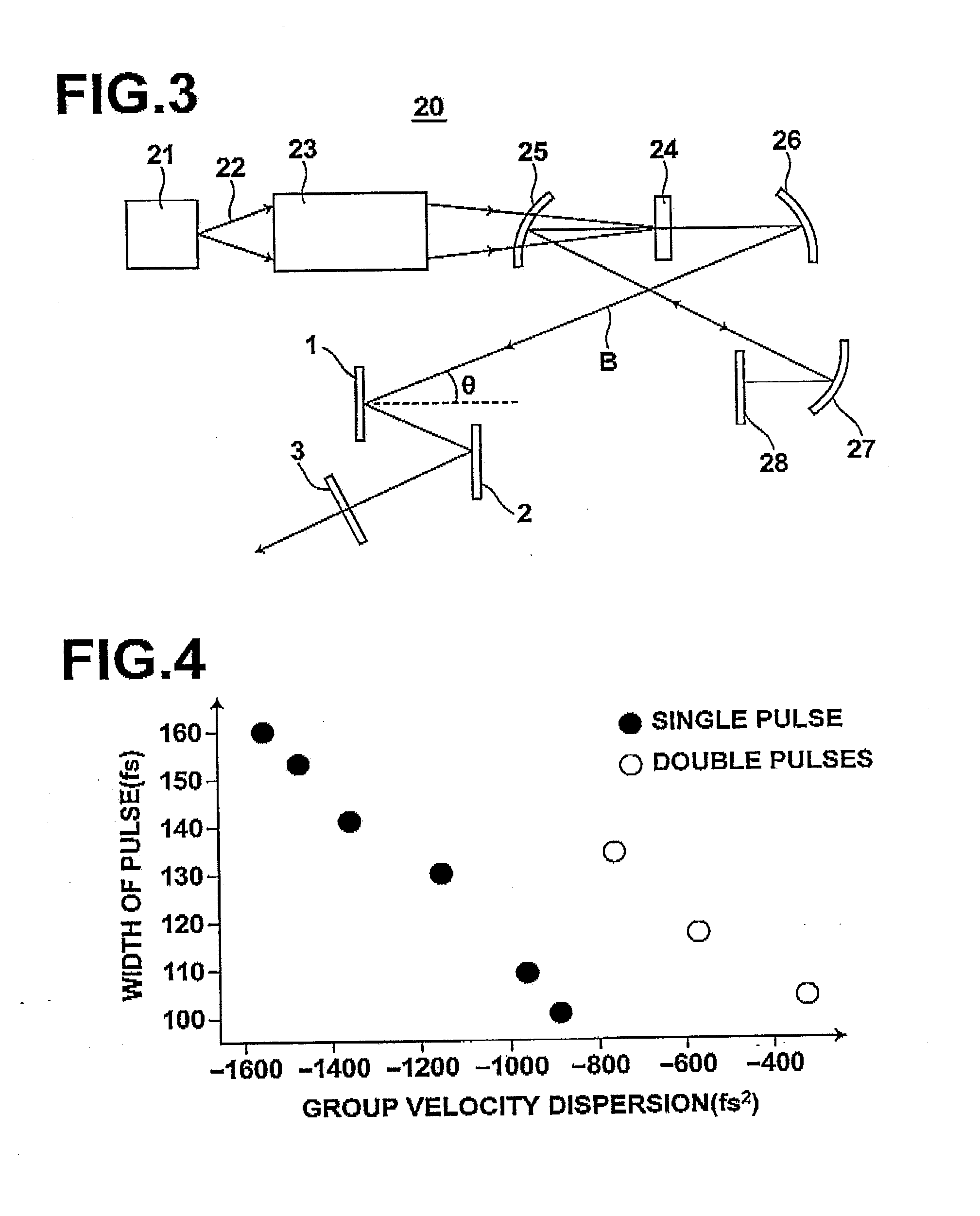Dispersion compensator, solid-state laser apparatus using the same, and dispersion compensation method
a laser and compensator technology, applied in the direction of instruments, mirrors, laser details, etc., can solve the problems of increased laser equipment and instability, low loss, low cost, and high stability, and achieve the effect of reducing the size of the variable dispersion compensator, increasing the range, and reducing the negative dispersion varian
- Summary
- Abstract
- Description
- Claims
- Application Information
AI Technical Summary
Benefits of technology
Problems solved by technology
Method used
Image
Examples
first embodiment
[0067]FIG. 1 illustrates a variable dispersion compensator 10 according to a The variable dispersion compensator 10 includes so-called GTI mirrors using etalon interference as negative dispersion mirrors (dispersion compensation mirrors). However, any type of mirrors other than the GTI mirrors may also be used as long as they provide negative dispersion which is dependent on incident angle.
[0068]A negative dispersion mirror 1 (first mirror) and a negative dispersion mirror 2 (second mirror) of the type described above are disposed parallel to each other on a rotation mechanism 4 rotatable around a center of rotation O. A planar reflection mirror 3 is disposed outside of the rotation mechanism 4 as a third mirror such that light from the negative dispersion mirror 2 is incident thereon at normal incidence. The optical path of an input laser beam Bin is set so as to incident on the negative dispersion mirror 1. In the present embodiment, the center of rotation O of the rotation mecha...
second embodiment
[0078]Next, a solid-state laser apparatus 20 will be described with reference to FIG. 3. The solid-state laser apparatus 20 is formed with the variable dispersion compensator 10 shown in FIG. 1 inserted in a mode locking laser oscillator, and includes: an excitation laser 21; an excitation optical system 23 that collimates and focuses an excitation laser beam 22 emitted from the excitation laser 21; a laser crystal 24 disposed at a focus position of the excitation laser beam 22 focused by the excitation optical system 23; concave mirrors 25, 26 disposed opposite to each other with the excitation optical system 23 between them; a concave mirror 27 disposed at a position where a solid-state laser beam B reflected by the concave mirror 25 is incident; and a semiconductor saturable absorbing mirror (SESAM) 28 disposed such that the solid-state laser beam B is incident thereon at normal incidence.
[0079]As for the excitation laser 21, for example, a semiconductor laser that emits the las...
third embodiment
[0083]The optimum value of the dispersion compensation is a function of laser medium used, excitation density, output coupling ratio of output mirror, internal loss, wavelength range and the like, and varies largely. Where the absolute value of dispersion amount is insufficient, it is desirable to cause multiple reflections to occur between the negative dispersion mirrors 1 and 2 as in a variable dispersion compensator 30 illustrated in FIG. 5. That is, the amount of dispersion in reciprocation may be increased by increasing the number of reflections in this way.
[0084]Further, the variable amount provided by the negative dispersion mirrors 1 and 2 is limited. Therefore, it is conceivable to give a fixed amount of dispersion to the planar reflection mirror 3 so that an optimum value of dispersion falls within a dispersion amount range covered by the dispersion compensator.
[0085]A variable dispersion compensator 40 according to a fourth embodiment illustrated in FIG. 6 may keep the i...
PUM
 Login to View More
Login to View More Abstract
Description
Claims
Application Information
 Login to View More
Login to View More - R&D
- Intellectual Property
- Life Sciences
- Materials
- Tech Scout
- Unparalleled Data Quality
- Higher Quality Content
- 60% Fewer Hallucinations
Browse by: Latest US Patents, China's latest patents, Technical Efficacy Thesaurus, Application Domain, Technology Topic, Popular Technical Reports.
© 2025 PatSnap. All rights reserved.Legal|Privacy policy|Modern Slavery Act Transparency Statement|Sitemap|About US| Contact US: help@patsnap.com



